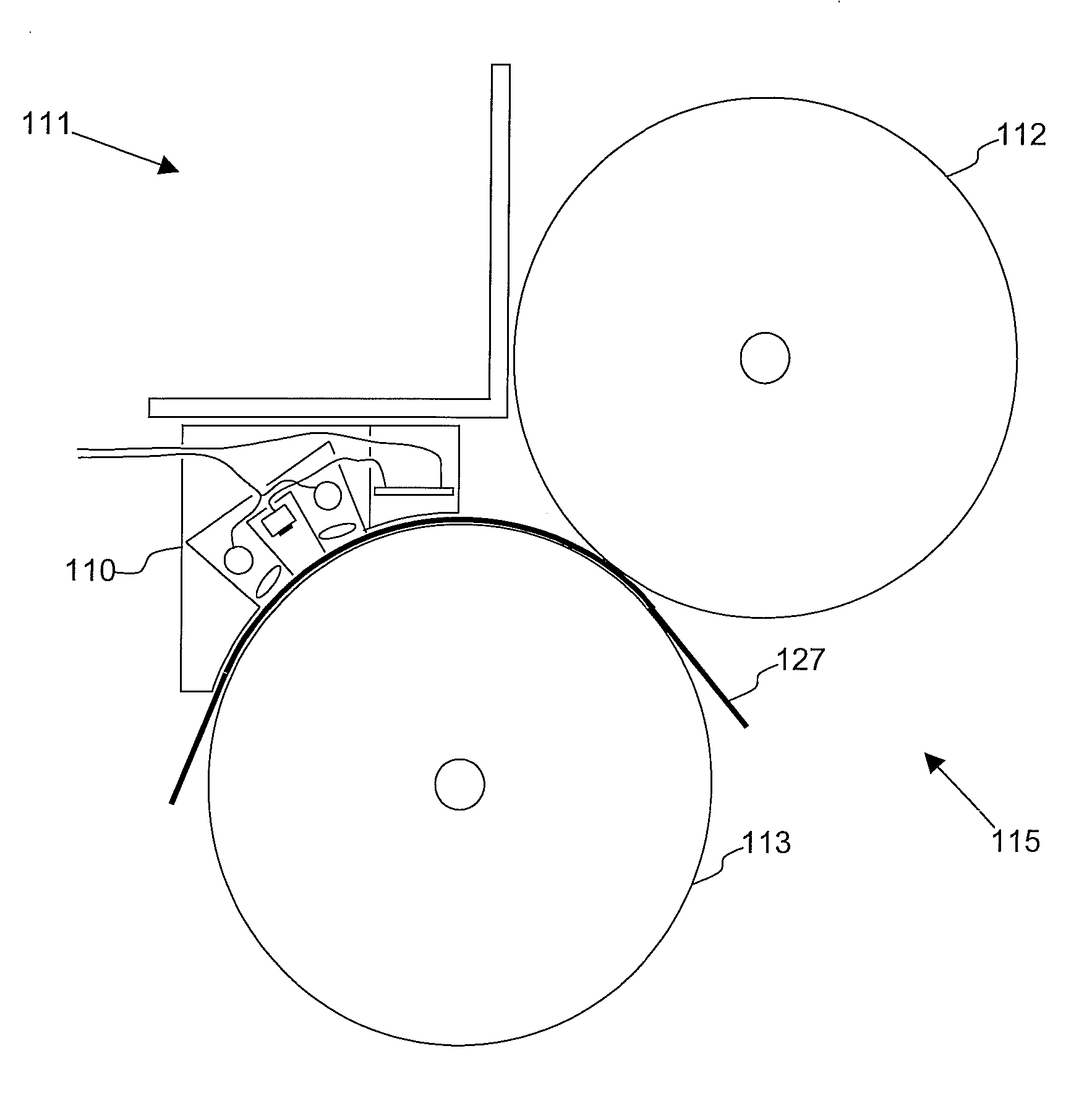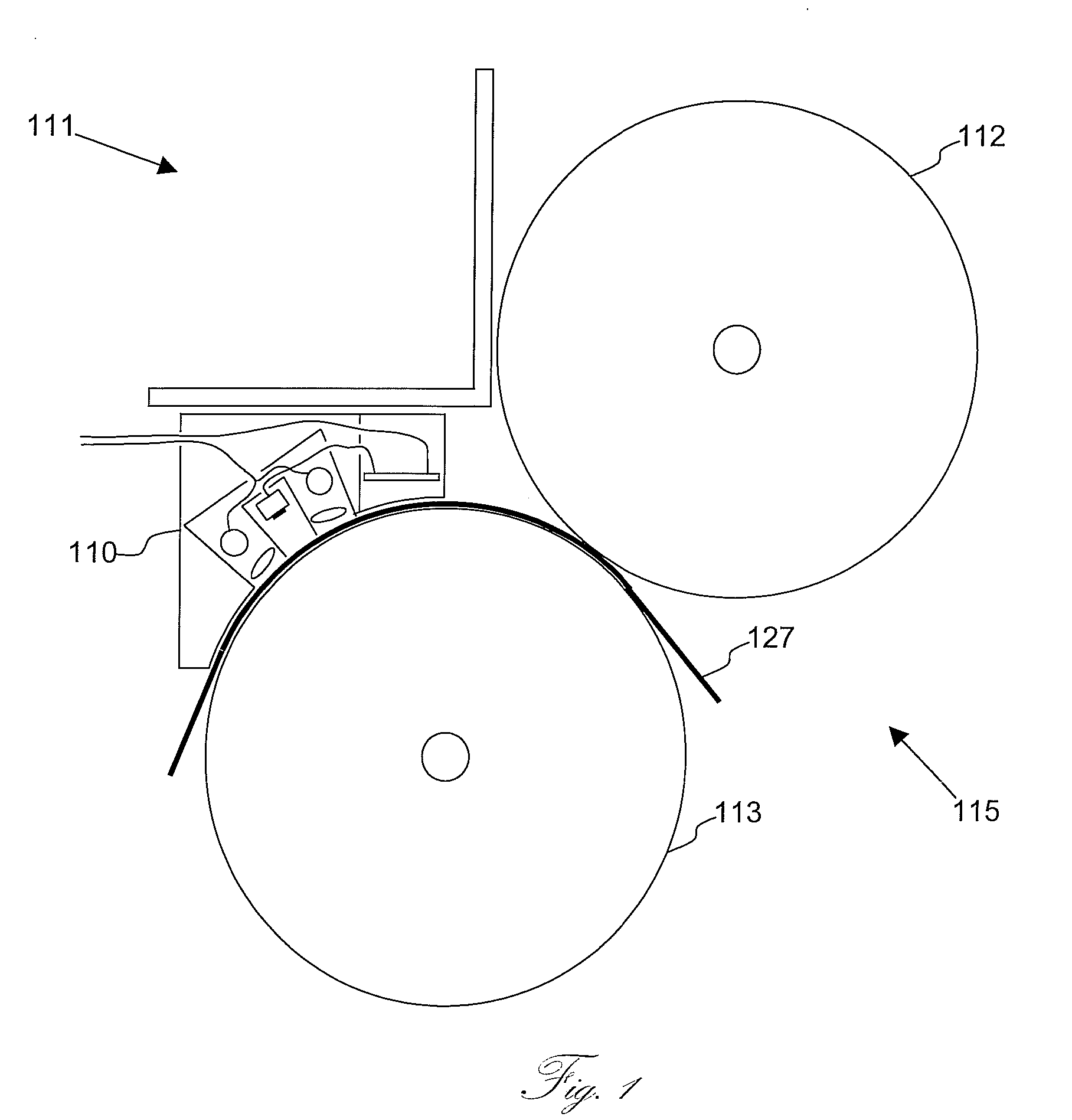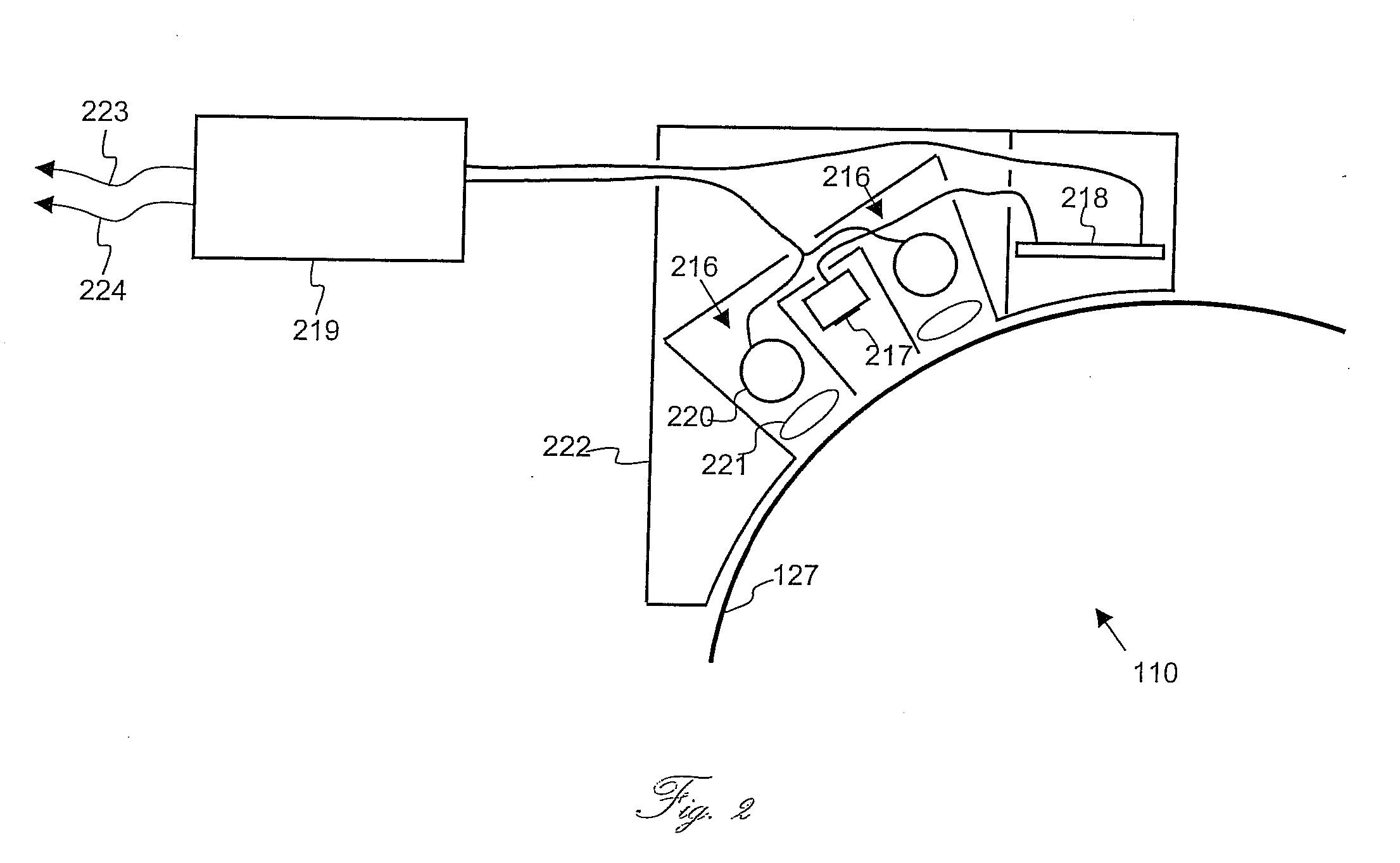Density measurement, colorimetric data, and inspection of printed sheet using contact image sensor
a contact image sensor and density measurement technology, applied in the field of density measurement, colorimetric data, and quality assessment of printed matter, can solve the problems of reducing the set-up time of a print job run, inherently expensive stoppage, and industrial printing is a very fast process, so as to reduce the resolution and increase the accuracy
- Summary
- Abstract
- Description
- Claims
- Application Information
AI Technical Summary
Benefits of technology
Problems solved by technology
Method used
Image
Examples
Embodiment Construction
[0091] The present embodiments enable high-speed, high-resolution imaging of a sheet within a sheet-fed offset press, and to use this imaging to assess the quality of the printed image. Particularly, the present embodiments provide information about optical densities, color composition, color registration, etc. Furthermore, the present embodiments provide information regarding the image quality in real-time, to analyze this information and to produce feedback to the printing machine so as to correct drifts in image quality without stopping the printer or decreasing the printing speed. The present embodiments implement illumination elements and light sensors in close proximity to the printed surface and use for this purpose an array of Contact Image Sensors (CIS). Preferably the sensors are connected in parallel so as to output information at high speed and allow real time processing, and the information is fed back to the printing machine to change settings as necessary.
[0092] Cons...
PUM
 Login to View More
Login to View More Abstract
Description
Claims
Application Information
 Login to View More
Login to View More - R&D
- Intellectual Property
- Life Sciences
- Materials
- Tech Scout
- Unparalleled Data Quality
- Higher Quality Content
- 60% Fewer Hallucinations
Browse by: Latest US Patents, China's latest patents, Technical Efficacy Thesaurus, Application Domain, Technology Topic, Popular Technical Reports.
© 2025 PatSnap. All rights reserved.Legal|Privacy policy|Modern Slavery Act Transparency Statement|Sitemap|About US| Contact US: help@patsnap.com



